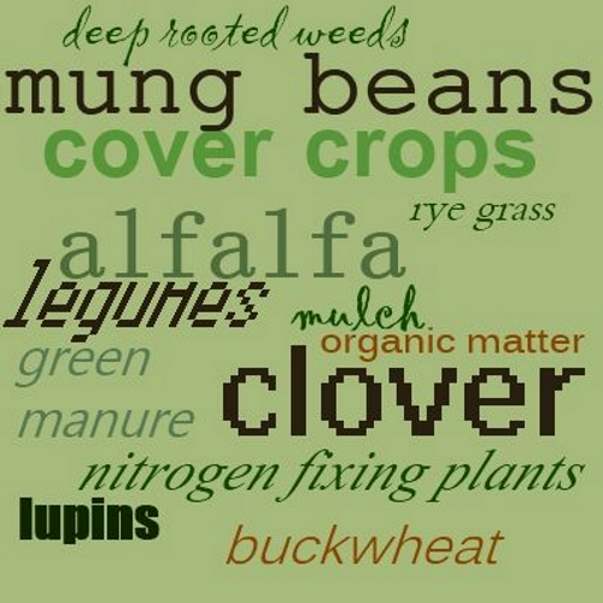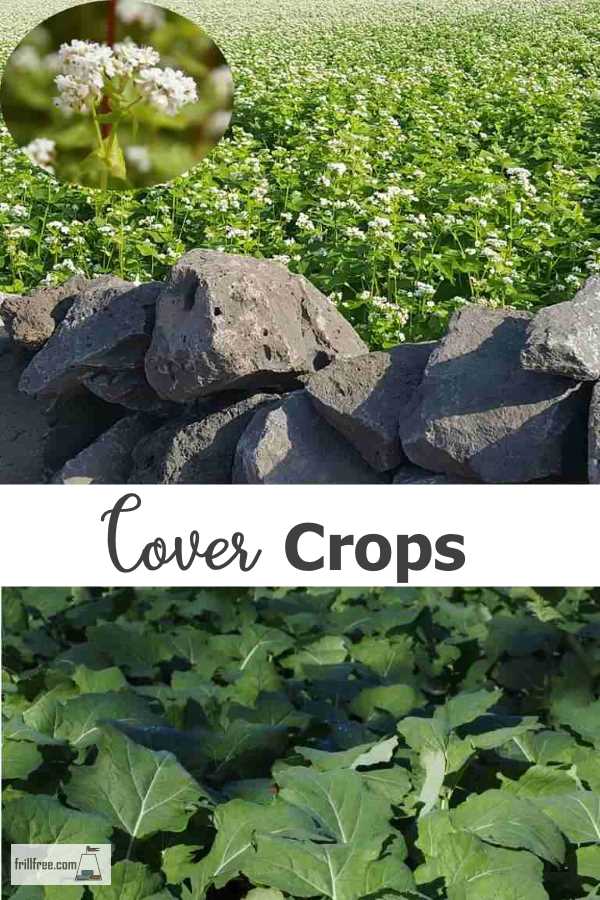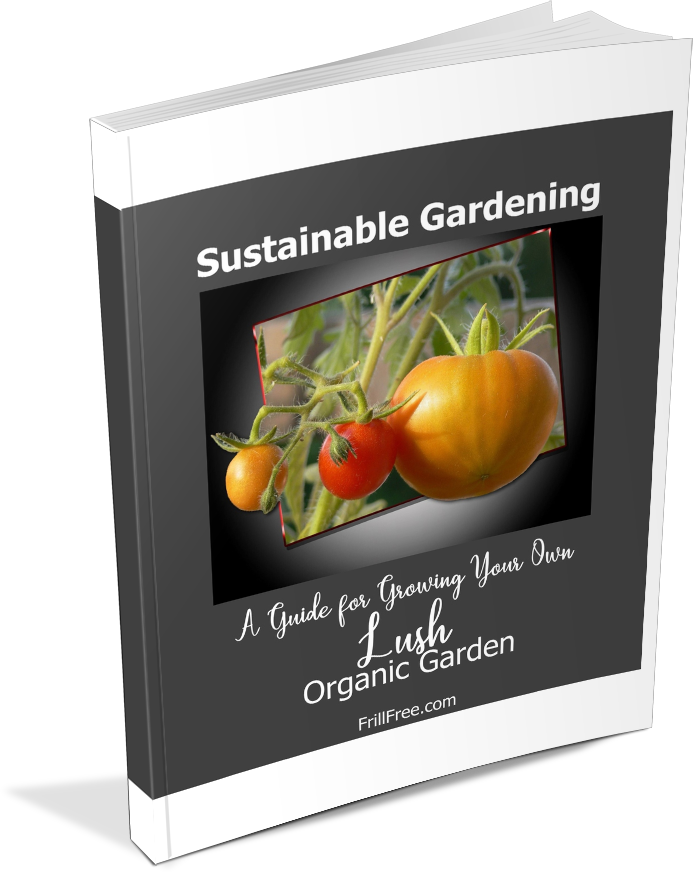- Homesteading
- Soil Fertility
- Cover Crops
Cover Crops
Adding Organic Matter, Matters
Planting green manure cover crops is an excellent way to add organic matter to your garden fast.
This can be done while the crop is still growing or after harvesting, depending on the type of crop, type of green manure, and the time of year. Cover crops fit perfectly into a system of crop rotation or stacking.
Another main benefit of using green manure cover crops is that they prevent erosion by protecting the soil against severe rainfall and wind to help with soil conservation.
You can grow the green manure cover crop right in the garden bed, or grow it in a mulch bed to cut and use for mulch.
The organic matter added to your soil will enable it to retain moisture even during a drought, to be doled out as needed to your thirsty crops.
Many mail order seed companies have good selections of cover crop seeds; here are a few tips:
Plant any bed after harvesting with buckwheat which will mature in a matter of weeks and can be dug in and planted right away for a second or third crop of vegetables, depending on how long your growing season is.
 Cover Crops - protect the soil, add organic matter and conserve moisture, all in one...
Cover Crops - protect the soil, add organic matter and conserve moisture, all in one...- Buckwheat has white flowers that attract bees, and is not hardy so the first frost will kill it off to rot down over the winter.
- Winter peas can be planted in the early fall after your garden is harvested and grow until they winter kill with the arrival of cold temperatures, covering your no till bed with a lovely mulch which you can plant directly into.
The roots will rot over a few months, providing your crop with a slow release fertilizer as they decompose.
By the time spring arrives your soils tilth will be dramatically improved.
- Another leguminous plant that also has the ability to obtain nitrogen from the air and store it in the roots is white or alsike clover.
Use it on pathways, as its low growth is fairly easy to keep in bounds.
Eventually, you can dig it up and compost it, or mow it to keep it low.
It also will bloom with white flowers to attract bees to pollinate your tomatoes and peppers.
 Cover your precious soil with something, anything. Some cover crops are better than others; find those with nitrogen fixing nodules on their roots, or those that grip the soil to hold it in place, and prevent erosion.
Cover your precious soil with something, anything. Some cover crops are better than others; find those with nitrogen fixing nodules on their roots, or those that grip the soil to hold it in place, and prevent erosion.- At the end of the harvest of potatoes, Brassicas like kale or broccoli, or onions, plant fall rye grass to make a quick cover which can protect the soil over winter, and be planted into in the spring without digging it under as it usually winter kills in colder climates.
Some gardeners claim that fall rye will kill wireworms in the soil, although I’ve had the opposite experience.
In many areas that fall rye was planted, there seemed to be a lot of wireworms, just waiting for you to plant your precious potatoes.
Ideally, you would be able to turn the chickens out onto any area planted with fall rye, and they would dispatch the pests before you plant your crops.
Bonus – they will also fertilize for you.
- Many organic gardeners swear by alfalfa as a green manure; the biggest drawback to it is
that it requires at least a couple of growing season to produce best results, and by that time the roots go down to China. Dig it in before it tries for world domination, it will add a lot of nutrients that it brings up from the lower levels of soil.
It’s excellent for holding soil in place and reaching deep into the ground to find moisture.
It’s known as an accumulator for its ability to fix nitrogen from the air and other nutrients from lower layers of soil.
Unfortunately, with the advent of Genetically Modified Organisms, or GMO technology, organic growers will no longer be able to use alfalfa as mulch, even if it’s organically grown.
Till it in fully to destroy the roots as it’s hard to get rid of once it puts down its extensive root system.
I’ve seen it go down as far as eight feet below the surface, only stopping when it reached the water table.
My preference if using alfalfa is to plant it in a permanent place to cut as mulch for garlic or onions, and feeding to your backyard chickens for those really dark golden yolks in their eggs.
- Rye Grass is another favorite, quick growing to form an impenetrable mat if you're in a heavy rainfall area.
The thick growth protects the soil from washing away.
As an added bonus, dogs and cats like to chew on it to get the chlorophyll - which means they won't be eating your houseplants!
- Some plants that we call weeds can provide some distinct benefits to your soil.
Even a crop of nettles or pigweed can improve your soil in a couple of seasons.
In one garden I had lots of thistles that
I just dug in and the tilth was incredible the next season. Their thick roots broke up the clay hardpan too.
Any weeds that have a deep taproot can be used to break up hardpan, even the concrete hard layer caused by excessive plowing at the same depth year after year.
Other than using a subsoiler to plow below it, the only other solution is to use plants that can break it up, sometimes in less than two seasons.
- Comfrey is used as a long term green manure, or a crop to be grazed or cut for your farm creatures.
It’s a big hit with chickens and other poultry if planted in a chicken herbarium, providing them with an incredibly high amount of certain nutrients and vitamins such as potassium.
This is another accumulator, with a hefty taproot to enable it to survive extended dry periods.
Other ways to use cover crops are as compost tea, to distill those valuable nutrients even more.
Whichever type of green manure cover crops you choose, find ones that can achieve several benefits for you; multi tasking at its finest.
Frequently Asked Questions;
Why use a live cover crop instead of mulch?
Why use a live cover crop instead of mulch?
Live cover crops are dug in at a certain stage, but before they are, they bring up nutrients from as far as their roots range in the soil.
Another benefit is that they prevent soil erosion, unlike straw or leaves which could blow off in a winter storm - right when you need the protection.
Can I save some seed from my cover crops?
Can I save some seed from my cover crops?
Generally, no. They are dug into the soil before they set seed as a rule - this is to prevent them self seeding. However, there would be nothing stopping you from allowing a small patch to reach maturity and collect the seeds before they fall to the ground.
This depends of course on the type of ground cover; some will be perennial or biennial, rather than annual plants, in which case unless you plan on designating a particular bed to them for a longer term, this wouldn't be a success.













